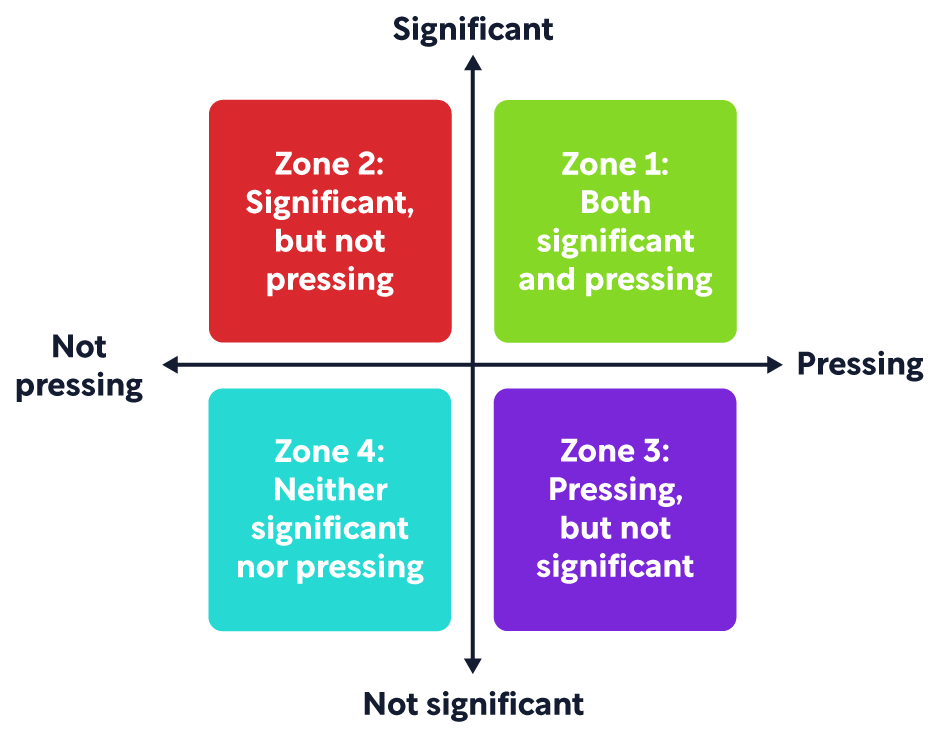Todo Apps: My Personal Workflow
Regain mental capacity by intentional forgetting
I’m borrowing the idea of significance vs pressure from First Things First by Stephen R. Covey. It emphasizes the importance of prioritizing tasks based on their significance, not their urgency. It’s a great way to avoid getting distracted by the urgent tasks that are not important.

With the above graph in mind, I’m sorting my daily and long-term tasks into different apps based on their significance and frequencies.
MinimaList: Scheduled Daily Tasks
I use MinimaList as a habit building and focus app that helps turn long-term goals into small daily tasks. By breaking down a significant long-term project into insignificant daily chunks, it becomes more manageable and achievable. This iOS MinimaList with its free tier is enough for my use case. Free tier allows only a single list, notifications and a built-in pomodoro timer.
Example daily tasks:
- Language Transfer app for Spanish learning (20 mins)
- Toucan app for learning new Spanish words (5 mins)
- Readwise app for reviewing highlights (10 mins)
- Shortform app for new books (20 mins)
- Journaling (10 mins)
Todoist: Things to forget
Todoist free tier has limited features, without notifications specifically.
I use it to keep items in the Neither significant nor pressing category, but they still need to be done eventually. These tasks may include things like scheduling hospital appointments that are several months away or other similar responsibilities that are not a top priority, but still require attention in advance. By keeping track of these items, I can avoid forgetting about them and prevent them from becoming a source of stress later on.
I usually add task dates that are ahead of deadlines by a few days to give myself some buffer time. Or in other instances, I add items to simply allow myself to remove the stress of trying to remember them, such as a shopping list that will be picked up when I’m in the store actually doing shopping.
Example tasks:
- An inbox task list before sorting
- monthly or annual todos
- subscription renewals
- second hand items to sell
- shopping lists
- quota/allowance tracker - monthly junk food quota
- race calendar reminders - datetime to enrol etc
Notion: 2nd brain
Notion is a powerful tool that can be used for a variety of purposes. It’s not a strict todo list app for me. But having your to-do list items close to their context is essential for efficient and effective task management. I have todo lists scattered in different Notion pages, such as Engineering Wiki, Readwise book highlights, Journals, etc.
Plus, Notion’s flexibility means you can add details and attachments to each task, such as notes, files, and links, making it easier to research tasks and complete them quickly.
Calendars: Time blocking and tracking
By blocking a slot of time in calendar, it kind of removes the friction of starting a task. With the sync between Todoist and Google Calendar, I can also revisit a specific date to see what I’ve done on that day. When journaling in Notion, I also prefer to use the calendar view to plan my todo items for the day or days ahead.
Goodreads: Book tracking
Goodreads is a social network for book lovers. I use it to keep track of the books I’ve read and want to read. It’s also a great place to find new books to read. I also use it to keep track of my reading progress. I have a goal to read 24 books in 2023. I’m currently on track to achieve it.